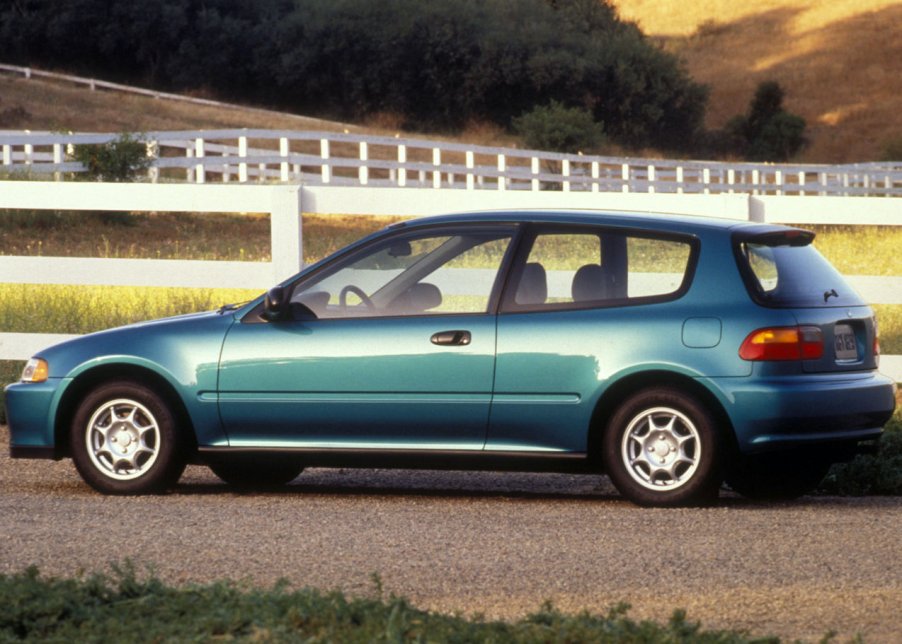
Fuel-Saver Flashback: 1992-1995 Honda Civic VX
Long before the first hybrid car was introduced in the U.S., manufacturers had to rely on smaller engines and longer transmission gearing to save fuel. During the 1990s, when gas prices were steadily increasing and SUVs started to become popular, Japanese brands like Honda made some of the most fuel-efficient cars on the road. One of the most fuel-efficient at the time was the Honda Civic VX. Let’s take a look back at what made this hatchback special.
History
The Honda Civic VX was part of the model’s fifth-generation lineup and was produced from 1992 to 1995. At the time, just like today, the Civic was produced in three different body styles: coupe, sedan, and hatchback. Compared to the fourth-generation Civic, the revised fifth-generation body style was smoothed out and “bubblier,” lending itself to better aerodynamics and a more modern look.
Along with the new body style came the use of lighter weight materials for better fuel efficiency, a longer wheelbase, and a raised cowl for a longer suspension travel and a more comfortable ride. The Civic hatchback came in four different trim levels: CX, VX, DX, and Si. All four of them had different powertrains and slightly different features that made them unique. The most unique of them all, however, was the VX trim.

Body
Since fuel economy was the name of the game at the time and technology wasn’t as advanced as it is today, Honda focused mainly on making their cars lighter and their engines smaller. As such, the Civic VX weighed only 2,094 pounds thanks to reduced trim and moldings and the use of lightweight 13-inch alloy wheels. Honda improved the car’s aerodynamics by adding a front lip spoiler and rear underbody spoiler that lead to a 0.31 coefficient of drag.
Engine
The Civic VX’s engine was considered revolutionary at the time. The powertrain consisted of a 1.5-liter, four-cylinder VTEC-E engine that was mated to a five-speed manual transmission. The engine had 16 valves that worked with a variable timing controller that deactivated one intake valve per cylinder at the lower RPM range. At 2,500 rpm, both intake valves would open up and create more airflow and performance. This technology, coupled with really long gear ratios in the transmission created a very fuel-efficient setup, void of any electric motors or large batteries.
Fuel Economy
Although the Civic VX was not a hybrid, it achieved fuel economy numbers that would be impressive even by today’s standards. Per the old EPA testing, the Civic VX originally achieved 47 mpg in the city and 56 on the highway. With the new testing, it’s rated at 39 in the city and 50 on the highway. It’s not a huge departure from the original figures and we’re sure just about anyone today would love to have a car with those fuel efficiency ratings.
Is it worth it to buy one today?
Definitely yes, if not for the stellar fuel economy for daily driving, then at least to own a piece of Honda engineering from over 25 years ago. The trouble is that it’s nearly impossible to find a clean example of one, however, they do come up from time to time on local classifieds. While the Civic VX didn’t use the same technical wizardry to achieve its fuel economy number like cars today, it was truly ahead of its time.



